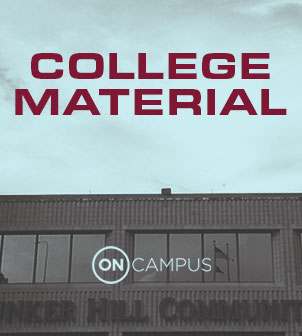The Education Department Friday released its much-anticipated plan to rate colleges. Starting next school year, the Department will rate more than 5,000 colleges and universities as high-, low- or middle-performing schools by measuring certain outcomes.
The Education Department wants to measure and then rank schools based on how much it actually costs to attend the school, how many students graduate and find jobs in their field, and whether colleges are admitting enough low- and middle-income students. Under Secretary Ted Mitchell says the measures will not include graduates' salaries or the average debt load students graduate with.
On Campus caught up with Paul Glastris, editor of the The Washington Monthly. You can listen to Glastris's full explanation of the college ratings, and politics surrounding them, here:
Related: A New Kind of College Ranking
The Department says the ratings will help families make better college choices and protect taxpayers' $150 billion investment in federal student aid. Ultimately, the Department would like to tie federal money to colleges' performances in the rankings, but that would take action by Congress. Currently the government doles out federal funds to schools regardless of performance.
As NPR reports on their education blog:
The White House previously announced that the plan would tie federal financial aid to colleges' performance as judged by these ratings. This step, which requires Congressional approval, is not set to occur until 2018.
The draft plan is now open for feedback through February, and the official ratings are expected before the 2015 school year.
In the months leading up to the release of the ratings plan, college presidents have been crying foul, saying the higher ed landscape is far too diverse for a one-size-fits-all system.
In a statement, American Council on Education President Molly Corbett Broad criticized the Education Department's approach. "The lack of detail about how a ratings system will be constructed, what the formula will look like and how different elements in the formula will be weighted means that colleges cannot have a reasonable idea about what this report will mean for them," she said. "The absence of academic quality, which is the essence of an institution's work, consequently renders any ratings system inadequate for prospective students to choose the best college for them."
Read The Washington Monthly's take on the new ratings here.
Interview transcript
GLASTRIS: The ratings, which are still a little bit indistinct - this was a draft it wasn't the actual ratings. They're going for three things. They want to measure access: are these colleges letting students of low and middle income in? They want to measure performance or outcomes: how are these students doing when they leave? And they want to measure affordability: what is the cost of these colleges?
CARAPEZZA: So those are the three things they're honing in on. How are they planning to measure them?
GLASTRIS: On the access part, they're going to be looking at the percentage of students who are on Pell Grants, those are grants for lower and middle income students. On the affordability front, they are looking at something called net price of attendance. That's essentially the actual price you pay including tuition fees, books, etc - without all the grants and scholarships. So this is not the sticker price, it's the actual price. And on outcomes they're looking at things like graduation rates, transfer rates. But really all of these things are clearly a step forward.
CARAPEZZA: What do you think is missing?
GLASTRIS: I do think one of the most important outcome measures is careers. It doesn't have to be salary exactly, but you do want to see which colleges and which departments are in fact working. Most people go to college to get a good job and right now they have no idea if the college where they go will allow them to get a good job.
CARAPEZZA: It's taken about 18 months to get to just this point. We're at a draft frame-work. This is pretty ambitious, right?
GLASTRIS: It is ambitious. And it's also highly contentious. There are plenty of colleges that are going to look quite bad. Most of the public colleges and community colleges are on board with this thing. But they're getting a lot of blow back from the privates and from the for-profits.
CARAPEZZA: So what's the next step?
GLASTRIS: What the administration would like to to do is tie federal funding to these ratings. The federal government spends $175 billion a year on higher education in the form of grants, subsidized loans, research, tax breaks - for which they require nothing. There is no requirement for accountability, for performance. This is the first step towards changing that. But the next step would be tying funding to the ratings, and that's going to take an act of Congress, and I don't think there's much chance of this Congress agreeing to that.










